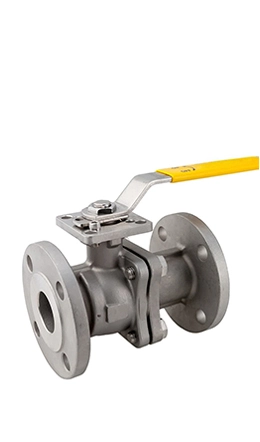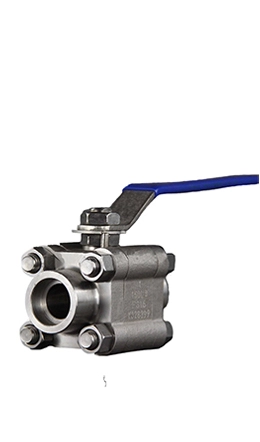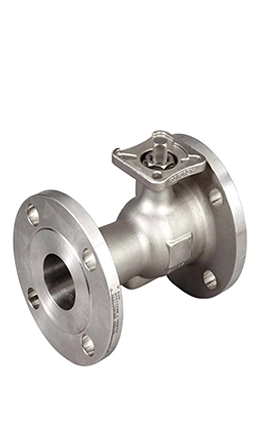Designed for easy maintenance, this valve features a two/three-piece bolted body, enabling quick access to internals (ball, seats, seals) without pipeline removal. Ideal for high-pressure/temperature (oil & gas, chemical) and abrasive/corrosive fluids (mining, wastewater), it suits large diameters (2”+) and limited-access installations. Its modular construction minimizes downtime during part replacements, while full-bore options ensure low-pressure drop. Common in sanitary (food/pharma) and thermal-cycling systems, it balances serviceability with robust performance.



A split body ball valve is designed with a body divided into two or more sections, typically around the ball, facilitating easier maintenance and robust performance. Here are the key scenarios and industries where its use is advantageous:
1. High-Pressure and High-Temperature Systems:
Ideal for oil and gas, chemical processing, and power generation due to their robust construction, which ensures reliable sealing and durability under extreme conditions.
2. Frequent Maintenance Requirements:
Suitable for systems requiring regular inspection or replacement of internal components (e.g., seals, seats, or the ball) without removing the valve from the pipeline, minimizing downtime.
3. Corrosive or Abrasive Fluids:
Effective in chemical, mining, and wastewater treatment industries where corrosive or slurry fluids cause rapid wear. The split design allows easy access to replace worn parts.
4. Large Valve Sizes:
Commonly used in larger diameters (2 inches and above) where assembly and disassembly are more manageable compared to single-body valves.
5. Systems with Limited Access:
Beneficial in installations where valves cannot be easily removed for maintenance, as the split body enables in-situ servicing.
6. High-Purity or Sanitary Applications:
Used in food, beverage, and pharmaceuticals where thorough cleaning is essential. The design allows complete access to internal surfaces.
7. Thermal Variation Environments:
Accommodates thermal expansion/contraction, reducing stress on the valve body and pipeline.
Here’s a detailed comparison of Split Body Ball Valves and Full Welded Ball Valves, focusing on their design, performance, maintenance, and applications to help you choose the right type for your needs
1. Design and Construction
Split Body Ball Valve:
Body: Constructed from 2 or 3 bolted-together pieces (e.g., body halves and end caps).
Accessibility: Allows easy access to internal components (ball, seats, seals) for maintenance.
Assembly: Bolted joints enable disassembly without removing the valve from the pipeline.
Full Welded Ball Valve:
Body: Made from a single-piece, fully welded structure (no bolts or joints).
Seamless Design: Eliminates potential leak paths at body joints.
Permanence: Cannot be disassembled for maintenance; repairs require cutting the valve out of the pipeline.
2. Maintenance and Repairs
Split Body Valve:
Pro: Easy in-line maintenance (e.g., seat or seal replacement) by unbolting body sections.
Con: Requires periodic re-tightening of bolts to prevent leaks.
Downtime: Minimal for repairs.
Full Welded Valve:
Pro: No maintenance needed for body integrity (ideal for buried/subsea applications).
Con: Internal repairs are impossible; the entire valve must be replaced if damaged.
Downtime: High (requires pipeline shutdown and valve replacement).
3. Pressure and Temperature Ratings
Split Body Valve:
Pressure: Suitable for moderate to high pressure (Class 150–600).
Temperature: Limited by gasket/seal materials (typically -50°C to 200°C with PTFE seats).
Weakness: Bolted joints may fail under extreme thermal cycling or pressure surges.
Full Welded Valve:
Pressure: Handles very high pressure (Class 600–2500+).
Temperature: Withstands extreme heat/cold (-196°C to 500°C+ with metal seats).
Strength: Welded body resists deformation in harsh conditions.
4. Leakage and Sealing
Split Body Valve:
Leak Paths: Risk at bolted body joints and stem seals.
Sealing: Relies on gaskets between body sections, which degrade over time.
Full Welded Valve:
Leak Paths: Only at the stem and seat seals (no body joints).
Sealing: Superior leak-tightness for hazardous or high-purity fluids (e.g., LNG, toxic gases).
